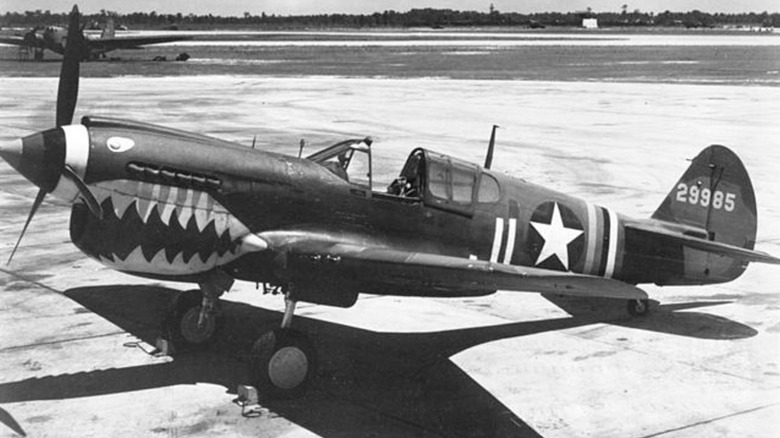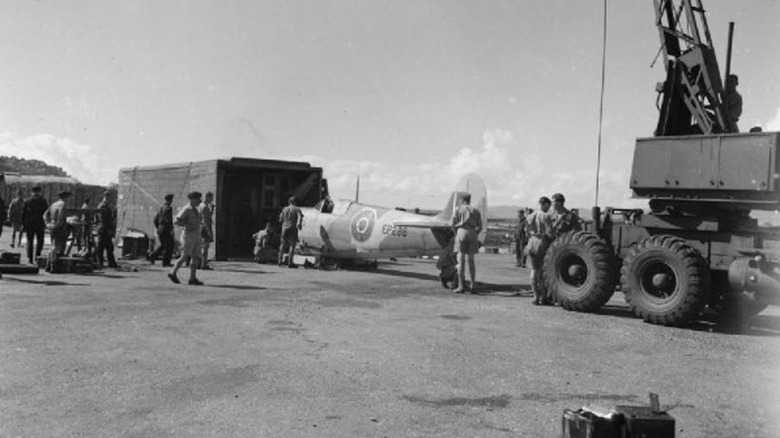How Did The US Military Transport Planes To The Front Lines During World War 2?
Today when the United States military needs to transport an aircraft to an overseas location, pilots can fly a direct route, and if their aircraft doesn't have the range to do so, there's midair refueling. However, midair refueling didn't have practical applications yet during the time of World War II, making the logistics of stationing aircraft near the frontlines that much more complicated. Aircraft carriers weren't much of an option either since planes need to meet specific requirements to launch from one. Planes such as the B-17 Flying Fortresses that helped win World War II and the P-38 Lightning could fly across the Atlantic as long as they refueled in Greenland or Iceland. The P-51 Mustang and other fighters couldn't make that flight.
The process for getting smaller fighters across the pond and to the frontlines was more complicated than you would think. Tedious, even. The planes were built and quality checked in the U.S. Once they were approved for flying, they were disassembled and loaded in crates. From there, the crates were loaded on ships that delivered them to a port near the frontlines. The crates would then be delivered to their designated air field, reassembled, and checked for quality once again.
The ships transporting crates full of combat planes made for valuable targets, and every once in a while, the Axis powers sank one of them to the bottom of the ocean. The first American aircraft carrier met such a fate in the Dutch East Indies — it was ferrying a fleet of P-40s, one of the most notable planes to fight in the Pacific.
Ferrying planes was an extensive task
It's understandable to think that it was the Army Air Corp and its pilots flying the planes that could make the trip to the frontlines. However, before America got involved with transporting aircraft to the frontlines, it was the responsibility of the British military and civilian pilots. When the task became too demanding because England was the only European country capable of withstanding German advances after France fell in 1940, Gen. Henry H. "Hap" Arnold devised the Army Air Forces Ferrying Command, giving the British military some much needed reprieve. For 13 months the Army Air Forces Ferrying Command ferried 14,000 aircraft and thousands of equipment and personnel.
After those 13 months, the Ferrying Command was absorbed by Air Transport Command (ATC), which had plans for wartime mobilization since 1937. Much like Arnold's wishes to unify military and civilian air transport operations, the ATC included both military and civilian pilots. The Women Airforce Service Pilots (WASP) and commercial airline pilots joined the ATC ferrying division to fly newly built planes from factories to training bases to their destinations near the frontlines. A separate division set up a worldwide network of airfields with concrete runways , enabling the use of heavy transport planes virtually anywhere.
By the time World War II came to an end, the ATC operated more than 3,700 aircraft with 209,000 military and 104,000 civilian personnel. The war effort could have been very different had these groups not come together.

